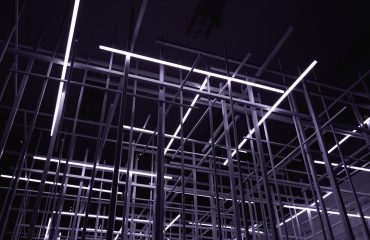The steel industry, a cornerstone of global infrastructure, has historically been a significant contributor to greenhouse gas emissions. However, a green steel revolution is underway, driven by necessity and innovation. This post delves into the exciting advancements shaping a more sustainable future for steel manufacturing.
1. Minimizing Carbon Emissions: The Heart of Green Steel
The primary focus of eco-friendly steel manufacturing is drastically reducing carbon emissions. Traditional blast furnace-based steelmaking relies heavily on coking coal, a major source of CO2. Several strategies are being employed to mitigate this:
- Hydrogen-based steelmaking: Replacing coking coal with hydrogen as a reducing agent in the steelmaking process eliminates direct CO2 emissions. While still under development, hydrogen steelmaking is considered a crucial pathway to decarbonization. Challenges include the cost and availability of green hydrogen (produced using renewable energy).
- Electric Arc Furnaces (EAFs): EAFs utilize electricity to melt scrap steel, significantly reducing reliance on virgin iron ore and coking coal. This process is already established and considerably cleaner than blast furnaces, making it a vital component of green steel production. Increasing the proportion of scrap steel used is key to maximizing the environmental benefits.
- Carbon Capture, Utilization, and Storage (CCUS): CCUS technologies capture CO2 emissions from steel plants and either utilize them in other industrial processes or store them underground. While effective, CCUS is currently expensive and requires significant infrastructure investment.
- Process optimization and energy efficiency: Improving the energy efficiency of steelmaking processes through technological advancements and optimized operations can also significantly reduce the overall carbon footprint.
2. The Crucial Role of Steel Recycling in Green Steel Production
Recycling steel is a cornerstone of sustainable steel production. Scrap steel can be readily used in EAFs, significantly reducing the need for new iron ore and coking coal. This closed-loop system minimizes environmental impact by:
- Conserving natural resources: Recycling steel saves vast amounts of iron ore, reducing the environmental burden of mining and processing.
- Lowering energy consumption: Melting scrap steel requires considerably less energy than producing steel from raw materials.
- Reducing greenhouse gas emissions: By substituting virgin materials, recycling drastically reduces the carbon footprint of steel production.
- Improving waste management: Recycling steel diverts scrap metal from landfills, promoting a circular economy.
Efforts to improve scrap steel collection and sorting are crucial to maximizing the efficiency and effectiveness of steel recycling.
3. Renewable Energy Integration: Powering a Sustainable Steel Industry
The electricity used in steelmaking, particularly in EAFs, significantly impacts the overall environmental footprint. Transitioning to renewable energy sources for powering steel plants is paramount. This involves:
- On-site renewable energy generation: Steel plants can integrate solar, wind, or hydropower to generate a portion of their electricity needs, reducing reliance on fossil fuel-based power grids.
- Power Purchase Agreements (PPAs): Purchasing renewable energy from external sources through PPAs ensures a clean energy supply for steel production.
- Grid modernization: Investments in modernizing electricity grids are essential to handle the fluctuating nature of renewable energy sources and ensure a reliable power supply for steel plants.
4. Technological Advancements: Driving Innovation in Green Steel
Continuous research and development are crucial for further advancements in green steel manufacturing. Emerging technologies include:
- Artificial Intelligence (AI) and machine learning: AI can optimize steelmaking processes, improving energy efficiency and reducing waste.
- Advanced materials and alloys: Developing new steel alloys with improved properties can reduce the amount of steel needed for specific applications, ultimately lowering the overall environmental impact.
- Improved process control and monitoring: Advanced sensors and monitoring systems can enhance the efficiency and sustainability of steelmaking processes.
5. Collaboration and Policy Support: The Path to a Sustainable Steel Future
Achieving a truly sustainable steel industry requires collaboration across the value chain, from raw material suppliers to end-users. Government policies and regulations also play a vital role:
- Carbon pricing mechanisms: Implementing carbon taxes or cap-and-trade systems can incentivize steel manufacturers to reduce their emissions.
- Government subsidies and incentives: Financial support for research and development, deployment of green technologies, and infrastructure development can accelerate the transition to green steel.
- Industry partnerships and collaborations: Collaboration between steel manufacturers, researchers, and policymakers is essential for sharing knowledge and resources to drive innovation and accelerate the adoption of sustainable practices.
- Consumer awareness and demand for sustainable products: Increased consumer demand for sustainably produced steel can drive market forces towards greener practices.
The transition to eco-friendly steel manufacturing is a complex but crucial undertaking. By combining technological innovation, policy support, and industry collaboration, we can forge a sustainable future for this vital industry.
Tags: green steel, sustainable steel, eco-friendly steel, steel recycling, carbon neutral steel




